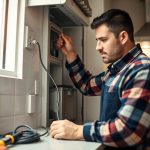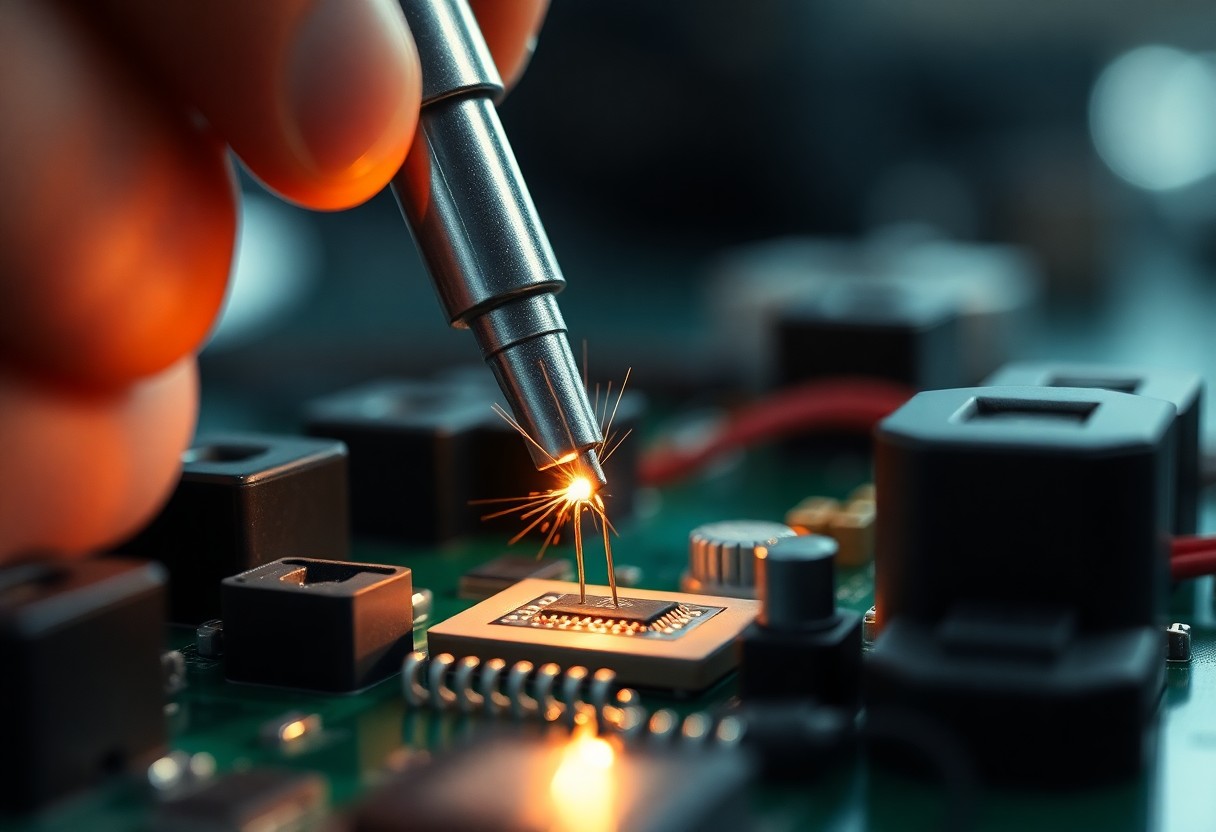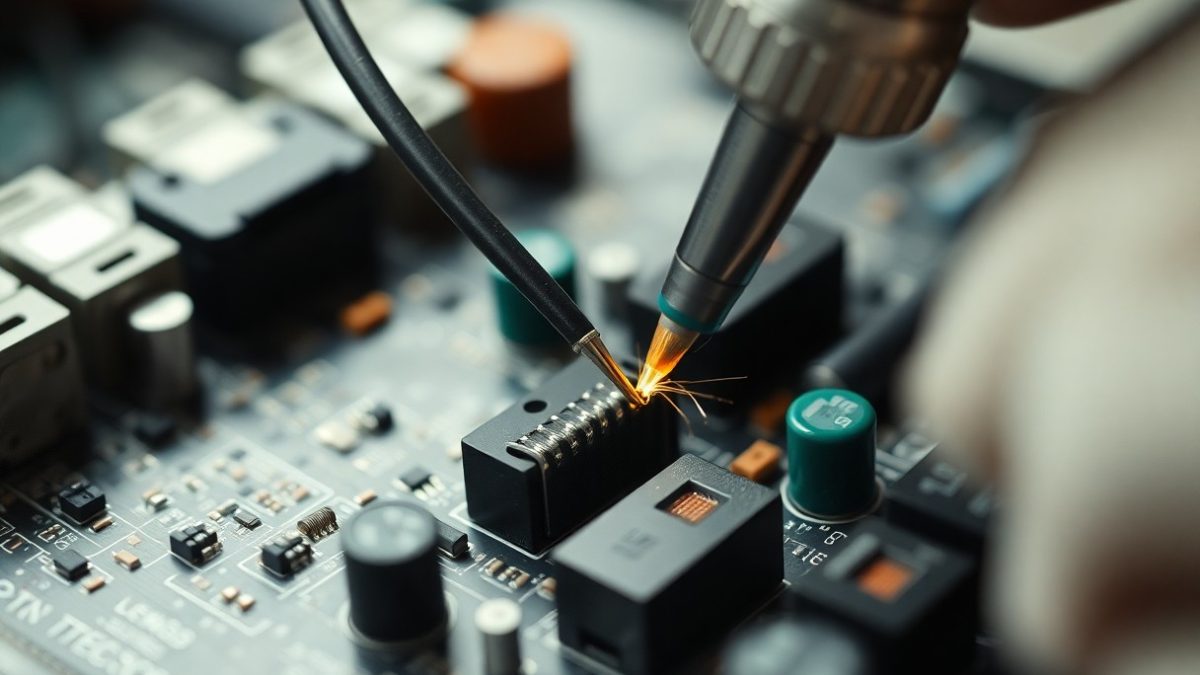
How Can A Zealous Approach To Grounding Elevate Your Appliance Installation Safety?
October 31, 2024
What Role Does Electromagnetic Compatibility Play In Appliance Installation Success?
November 4, 2024Soldering plays a vital role in ensuring that your electrical connections are strong and reliable. If you are engaged in electronics, understanding the techniques that enhance your soldering skills can make a big difference in the performance of your projects. This post will guide you through the best practices for achieving optimal results when soldering, ensuring that your connections are not only secure but also minimize the risk of failure. Let’s probe the various techniques that will elevate your soldering proficiency and improve your overall workflow.
Understanding Soldering Techniques
Your understanding of soldering techniques is vital for creating optimal electrical connections. Different methods cater to various applications, and mastering them ensures reliability and efficiency in your projects. A solid grasp of these techniques can prevent common mistakes and improve your overall soldering skillset.
Types of Soldering
Your projects may require specific soldering types, each beneficial for different scenarios:
- Through-hole Soldering
- Surface Mount Soldering
- Wave Soldering
- Reflow Soldering
- Laser Soldering
Thou can enhance your soldering versatility by exploring these methods.
| Type | Description |
| Through-hole | Ideal for securing components to PCBs. |
| Surface Mount | Used for compact designs with tiny components. |
| Wave | Effective for high-volume production. |
| Reflow | Popular with solder paste and SMT components. |
| Laser | Offers precision in intricate applications. |
Essential Tools and Materials
Essential tools and materials play a significant role in your soldering success. Having the right equipment will set you up for achieving quality connections while minimizing errors during the process.
It is vital to equip yourself with a good soldering iron, appropriate solder type, flux, and desoldering tools. Additionally, a stable work surface, tweezers, and safety gear improve your efficiency while ensuring safety. Investing in these tools demonstrates your commitment to achieving superior results in your soldering projects, allowing you to troubleshoot and refine your technique effectively.
The Importance of Temperature Control
Now, understanding how temperature control affects your soldering process can significantly enhance your electrical connections. Proper regulation of heat not only ensures effective melting of solder but also prevents damage to components. Below is a breakdown of key temperature control factors:
Temperature Control Factors
| Factor | Impact |
| Soldering Iron Temperature | Influences solder flow and bond quality |
| Duration of Heat Application | Affects component integrity and solder application |
| Ambient Temperature | Can alter soldering efficiency |
Soldering Iron Settings
By setting your soldering iron to the appropriate temperature, you optimize the melting point of your solder, ensuring smooth application. Various solder types may require different heat settings, so always consult manufacturer recommendations to achieve the best results.
Effects of Overheating and Underheating
An improper temperature setting can lead to significant issues. Overheating may damage sensitive electronic components, while underheating can prevent proper solder bonding, leading to unreliable connections.
Even slight deviations in heat can have lasting repercussions on your soldering work. When components are overheated, you risk melting plastics and diminishing the integrity of electrical parts, resulting in potential failures. On the other hand, underheating may cause the solder to remain weak and brittle, which can lead to poor electrical performance and intermittent connections. Therefore, keen attention to your temperature control will lead to more reliable and effective soldering outcomes.
Preparing Connections for Soldering
There’s no substitute for proper preparation when it comes to soldering. Ensuring your connections are clean and secure will significantly enhance the quality of your solder joints. Before you start, make sure to align all components correctly and visit A Comprehensive Guide to Soldering: Techniques, Tools … to gain insights into best practices that will encourage optimal electrical connections.
Cleaning and Tinning
Behind every strong solder joint is a clean surface. Dirt, oxidation, or contaminants on your metal surfaces can greatly hinder the soldering process. Make sure to use isopropyl alcohol or a suitable cleaner on the components before you start. Tinning both the wires and the connection points with a thin layer of solder can also enhance solder flow and improve adhesion, ultimately leading to a more reliable connection.
Joint Design Considerations
With effective joint design, you can ensure that your soldered connections are not only strong but also efficient. Consider the type of joint required for your application, whether it be a lap, butt, or point joint. Each type serves different purposes and has specific design characteristics that affect joint strength and reliability.
A well-thought-out joint design can significantly impact the performance of your electrical connections. Pay attention to factors such as the geometry of the components and the alignment of the wires or leads. Properly designed joints will not only facilitate better heat distribution during soldering but will also minimize mechanical stress once the soldered connection is in use, ultimately leading to a more durable and dependable electrical bond.
Step-by-Step Soldering Process
After gathering your tools and materials, it’s time to follow a systematic process for effective soldering. Below are the key steps you should take for optimal electrical connections:
| Step | Description |
| 1 | Clean the surfaces to remove any impurities. |
| 2 | Heat the joint to ensure proper bonding. |
| 3 | Apply solder to the heated joint. |
| 4 | Allow the solder to cool and solidify. |
| 5 | Inspect the joint for quality assurance. |
Heating the Joint
Soldering starts with the heating of the joint. You should aim to heat both the component lead and the pad on the PCB. This ensures that the solder flows effectively and creates a strong connection. Use a soldering iron with an appropriate tip size for your work, applying heat for just a few seconds before proceeding to the next step.
Applying Solder
Around the heated joint, carefully introduce your solder wire. You should allow the melted solder to flow into the joint seamlessly, creating a reliable and conductive bond. This method not only strengthens the connection but also reduces the risk of cold solder joints.
Consequently, ensure your solder has good wetting properties to achieve the best results. This will help the solder flow evenly and fill any gaps, promoting a solid connection. Keep your movements steady and avoid adding too much solder to prevent creating a blob that might lead to short circuits. Following this technique will enhance the overall integrity of your electrical connections.
Common Mistakes and How to Avoid Them
Keep your soldering practice error-free by understanding common mistakes that can jeopardize your electrical connections. Pay attention to factors like heat application time, cleanliness of components, and the type of solder you use. Proper preparation and technique will help you achieve reliable connections and prolong the life of your solder joints.
Cold Joints and Solder Bridges
Along with ensuring molten solder flows properly, it’s imperative to avoid cold joints and solder bridges. A cold joint occurs when the solder does not melt adequately, resulting in weak connections. Solder bridges, on the other hand, can unintentionally connect two conductive paths, causing short circuits. Take care to heat both the wire and the pad sufficiently before applying solder.
Using the Wrong Solder
Beside proper technique, it’s vital to use the correct type of solder for your project. Different solder compositions can affect how well the joint adheres and its electrical properties. For instance, lead-free solder requires higher temperatures and may not flow as easily as traditional leaded solder, which could lead to poor connections if not handled properly.
Due to the specific properties of solder, the right choice matters significantly for your projects. Lead-free solder is often preferred for environmental reasons, yet it requires additional skill to manipulate effectively. Using a solder with the wrong melting point can compromise your joints, causing them to fail under heat or stress. Always choose solder that matches the requirements of your components to ensure durability and performance in your electrical connections.

Testing and Ensuring Connection Integrity
Not ensuring the integrity of your electrical connections can lead to performance issues and equipment failure. It is crucial to conduct thorough testing and verification to confirm that your soldering techniques have resulted in strong, reliable connections. By implementing proper testing methods, you can validate that your connections are optimal, significantly reducing the likelihood of electrical faults.
Visual Inspections
After completing your soldering work, performing a visual inspection is vital. Look for clean, shiny solder joints that appear smooth and free of any bridging or cold solder joints. Ensure that the connection is well-formed and that components are securely in place. A careful visual assessment can help you identify potential issues before progressing to electrical testing.
Electrical Testing Methods
Besides visual inspections, utilizing various electrical testing methods will further verify the integrity of your connections. Techniques such as resistance testing, continuity testing, and using an oscilloscope can help you assess whether your soldered joints are functioning properly. Each method checks different aspects of electrical connectivity, ensuring your application runs smoothly.
The resistance testing method involves measuring the electrical resistance at the connection point, ensuring it meets acceptable thresholds for your application. Continuity testing confirms that current flows through the connection without interruptions. An oscilloscope can visualize signal integrity, helping you identify any noise or distortions. By incorporating these methods into your testing routine, you can ensure your soldered connections are dependable and perform as intended.
Conclusion
On the whole, utilizing the right soldering techniques is vital for ensuring optimal electrical connections in your projects. By familiarizing yourself with the best practices and avoiding common pitfalls, you can enhance the performance and longevity of your electrical components. Regularly assess your methods, invest in quality tools, and stay updated on advancements in soldering technology to further improve your skills. Your commitment to mastering these techniques will ultimately lead to more reliable and efficient electrical connections.

